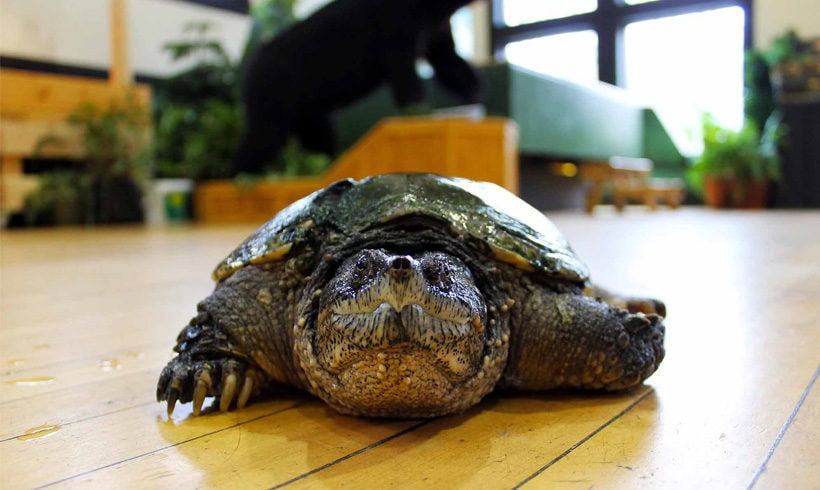Protecting Our Region’s Turtles

Five years ago, Lily (pictured above) was hit by a car and left on the side of the road for four days before being rescued. The complications that this caused left her unable to swim in deep water and therefore, unable to be returned to the wild. While Lily’s story is a sad one, there’s still a lot we can do to protect turtles in our region.
Turtles evolved more than 200 million years ago, when they walked the earth with the dinosaurs. Their success is due to their uniquely adapted shell which protects them from predators. Unfortunately, human development and habitat loss has largely contributed to a decline in our region’s turtle populations.
The choices that we make can help ensure their continued survival.
What can you do to help turtles?
If you encounter a turtle in the wild, take only pictures. Resist the urge to take it home or relocate to what you perceive as a “better” habitat. Baby turtles survive on instincts with no parental care. Trying to raise a baby turtle often results in more harm to them.
Help turtles move across roads in the direction that they are traveling. Do not relocate them. Peak road crossing season occur during nesting season (May-June) and often on sunny days after rainstorms. Below, Teatown’s Animal Care Supervisor demonstrates how to safely move a snapping turtle stranded in the road.
Get it help by bringing it to a licensed wildlife rehabilitator. Do not give it food or water. Keep it in a secure, quiet location until transport. Note the location so the turtle can be returned when healed.


